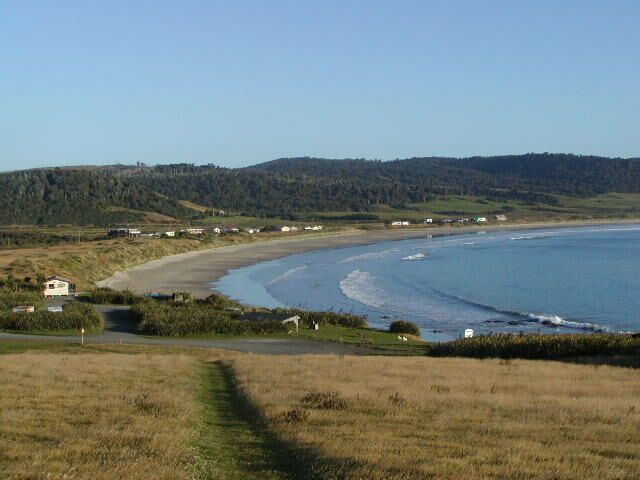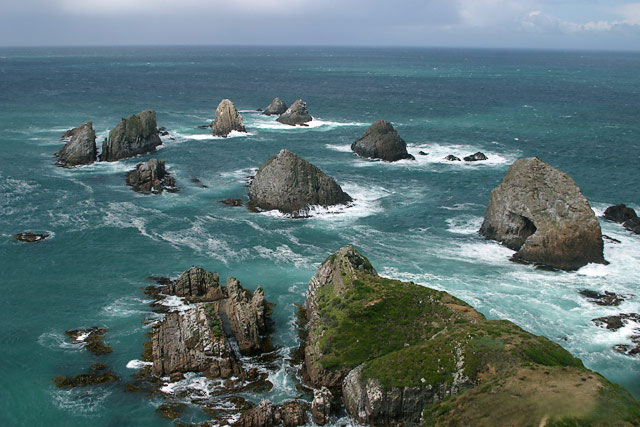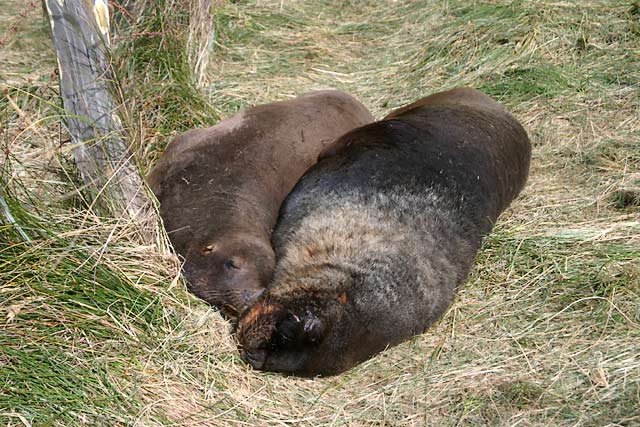Catlins

Often described as the South Island's best kept secret, the Catlins grows more popular by the year. The region extends from Waipapa Point in Southland to Nugget Point in South Otago. Loosely described, the area lies between the rolling hills of the Clutha and Mataura rivers. The scenic route, 215km/135m ( south from Balcluthia on State Highway 91 ) continues right on to Invercargill. The drive hugs a spectacular coastline and takes you within a region of virgin rainforest. The Catlins is not only rich in history but is alive with sea lions, penguins, dolphins and the calls of a range of birds.
Owaka is the the main town in the area and is the gateway to the Catlins. It is perhaps the best place to base yourself if you plan to take some of the many available tours in the region. However, by far the best way to enjoy the area is to drive along and explore the spots that interest you.
HistoryThe Catlins rich wildlife and forest lent itself to the various cultures that mark New Zealand's history. Initially, it was home to the Maori moa hunters and remains of their camp sites still lie in Papatowai. By 1800, the moa and the Maori population along with it had declined. In their place came the whalers who based themselves in Waikawa Harbour, Tautuku Peninsula and Port Molyneux. They were soon followed by the millers who milled beech trees and built 30 mills to provide wood for the Dunedin market. However, while the forest provided an abundant source, the rugged terrain made transport difficult. Although the railway was started in 1879, transport to Owaka was not available until 1904. By 1940 it had finally reached its final point in Tahakopa. The line was finally closed in 1971. The next onslaught by civilisation on the area came with the farmers who cleared the land for farming.
Flora
The Catlins Forest Park (22,250 hectares) is a native podocarp forest which lies behind the sand dunes of Tahokopa Bay and Tautuku Bay. The vegetation here is rich and varied. Starting with the beach at Tahakopa Bay are the sand-dune plants such as marram, lupin and flax. At the outskirts of the forest you will find the smaller trees like the five-finger, rata and kamahi. The mature podocarp forest further inland is home to the miro, rimu and kamahi. There's an easy river walk in the Catlins Forest Park which you can do. However, if you're keen to spot the rare yellowhead or mohua take the track to Tawanui which sets out from the Wisp camping area.
Places to Visit in Catlins

Cannibal Bay
Cannibal Bay owes its name to the human remains once found by a surveyor here ...
Cathedral Caves and Waipati Beach
You'll find the turnoff to the Cathedral Caves 5km from Tautuku. It's a 45min ...
Curio Bay
Curio Bay is a fossilised Jurassic Park. It clocks in at 160-180 million years ...
Kaka Point
Kaka Point is a long, narrow strip of land typical of the Catlins coastal ...
Nugget Point
Just at the start of the scenic route lies Nugget Point Lighthouse. It sits on ...
Papatowai
Papatowai is a sleepy little village just beyond Maclennan. Lying about mid-way ...
Purakaunui Bay and Falls
If you take the SH92 heading north from Papatowai you'll see the signs pointing ...